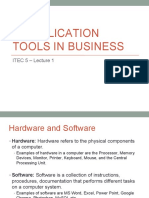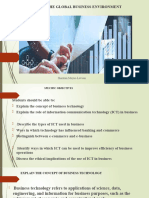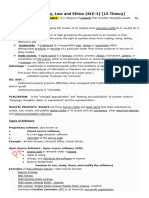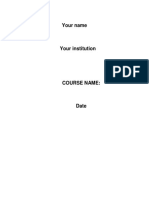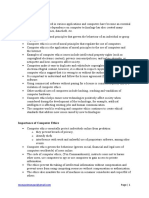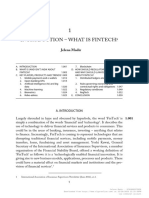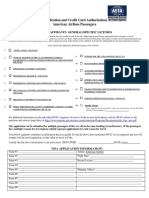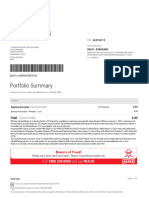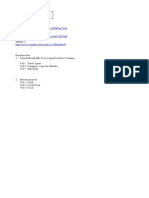0% found this document useful (0 votes)
8 views48 pagesUNIT 1 Lesson 1
This document provides an introduction to information technology applications in business. It discusses 10 technology trends that will influence business, including the growth of artificial intelligence, internet of things, edge computing, quantum computing, aerospace technology, 5G internet, health care predictions, agriculture technology, autonomous vehicles, and blockchain usage. It also covers the positive and negative impacts of technology on business operations, costs, security, communication, productivity, customer reach, and collaboration. Additionally, it discusses credit card fraud and identity theft, consequences of unsafe technology use, and digital content and copyright laws.
Uploaded by
Cesar Morales IIICopyright
© © All Rights Reserved
We take content rights seriously. If you suspect this is your content, claim it here.
Available Formats
Download as DOCX, PDF, TXT or read online on Scribd
0% found this document useful (0 votes)
8 views48 pagesUNIT 1 Lesson 1
This document provides an introduction to information technology applications in business. It discusses 10 technology trends that will influence business, including the growth of artificial intelligence, internet of things, edge computing, quantum computing, aerospace technology, 5G internet, health care predictions, agriculture technology, autonomous vehicles, and blockchain usage. It also covers the positive and negative impacts of technology on business operations, costs, security, communication, productivity, customer reach, and collaboration. Additionally, it discusses credit card fraud and identity theft, consequences of unsafe technology use, and digital content and copyright laws.
Uploaded by
Cesar Morales IIICopyright
© © All Rights Reserved
We take content rights seriously. If you suspect this is your content, claim it here.
Available Formats
Download as DOCX, PDF, TXT or read online on Scribd
/ 48






